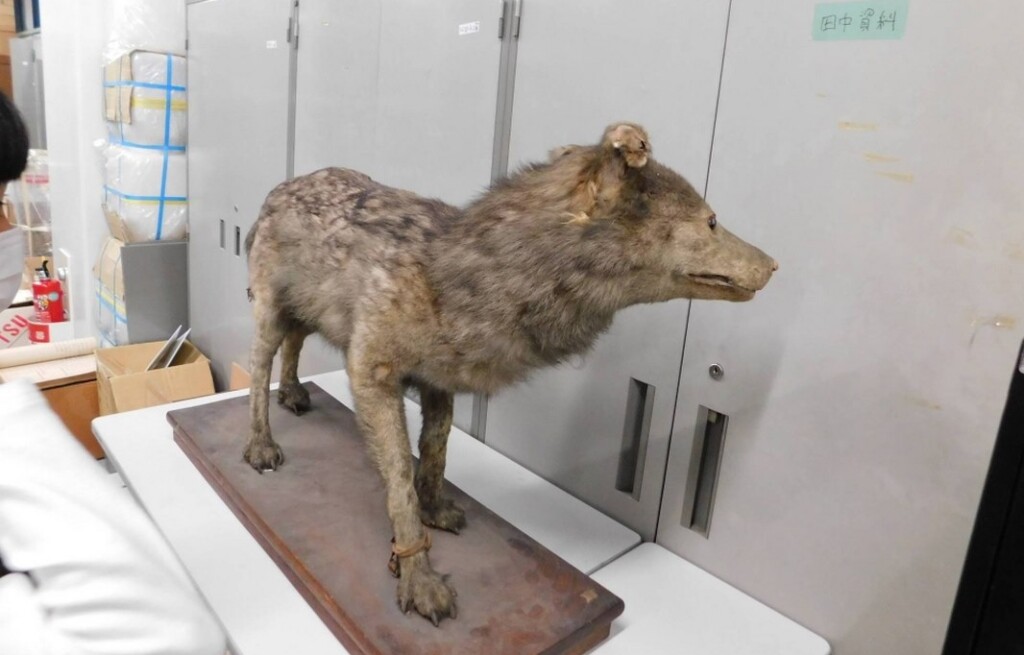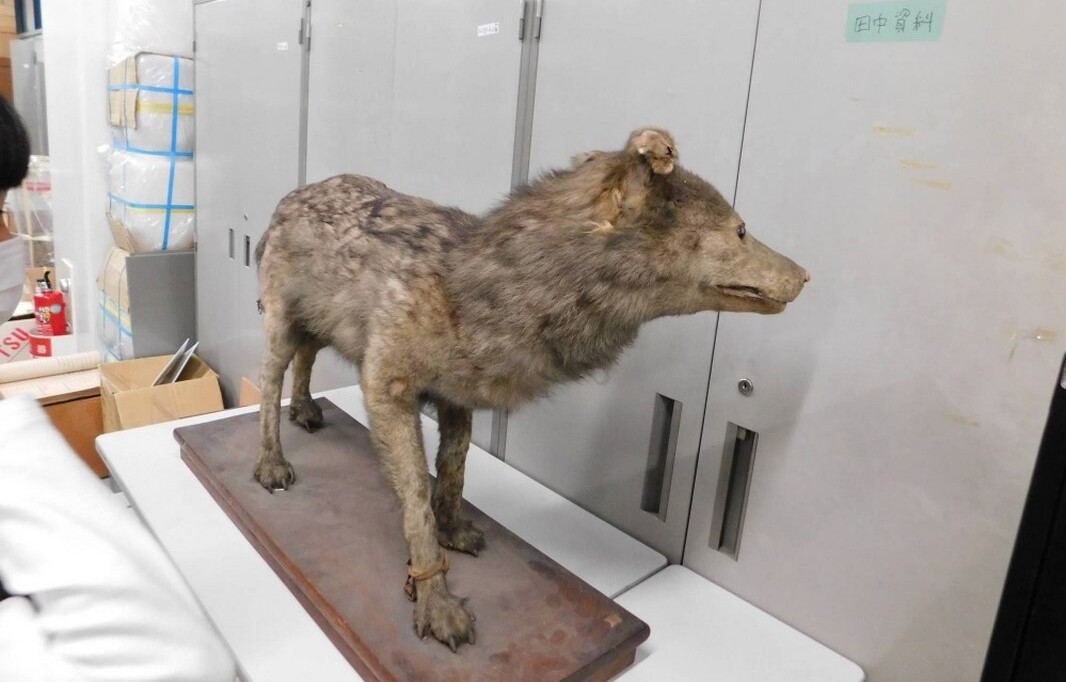
From Japan’s metropolitan heart comes the story of a young woman with a love for nature getting her paws in the door of a scientific career after identifying a taxidermied Japanese wolf gathering dust in a museum collection.
The Japanese wolf has been extinct for over a century, but for 10-year-old elementary schooler Hinako Komori, they epitomize her love and fascination with the natural side of her country.
Only four specimens of this subspecies exist in the entire world, and it was on a guided tour through the Tsukuba Research Departments of the National Museum of Nature and Science that young Hinako spotted a narrow-nosed canine with a bushy tail.
2 million specimens of the three visible kingdoms of life are held in the National Museum, and among all these she noticed the canine literally hiding in the shadows on a bottom shelf in a room on the 7th floor of the department.
Pausing, memorized features of the Japanese wolf from dozens of illustrations and antique photographs flashed through her mind. Asking the tour guide what the animal is, he replied that he really didn’t know.
But Hianko did—she was sure it was the same beast as the one at the Naturalis Biodiversity Center in Leiden, Netherlands, where one of the 4 Japanese wolf specimens is kept, or the more famously publicized one held at the National Museum.
Despite Nippon folklore elevating the wolf to the role of a benevolent spirit for their tendency to prey on animals that ruined farmers’ crops, the Japanese wolf (Canis lupus hodophilax) is believed to have gone extinct due to pressure from humans trying to protect livestock. Rabies, which had not been present on the island until the Meiji Period, also contributed to its decline.
Phylogenetic evidence indicates that the Japanese wolf was the last surviving wild member of the Pleistocene wolf lineage, and may have been the closest living relative to the first wolves ever domesticated by humans.
“When I came across that stuffed animal, I instantly fell into a state of excitement because it matched my image of a Japanese wolf,” Hinako, who is now 13 and attending junior high school, told Alex Martin at the Japan Times.
That day in the museum began a 3-year-long mission to study the specimen, labeled M831, that culminated in the publishing of a scientific paper, accepted by the Bulletin of the National Museum of Nature and Science.
MORE STORIES LIKE THIS: Teen Finds Whale Skull from 34 Million Years Ago While Fossil Hunting in Alabama
Hinako was a co-author alongside Sayaka Kobayashi, a researcher at the Yamashina Institute for Ornithology, and Shin-ichiro Kawada, a researcher at the National Museum’s Department of Zoology.
“In researching the Japanese wolf, I found that each taxidermy of the Japanese wolf is different, and that there are many questions that remain unanswered,” she told Martin.
However, after devouring every last scrap of scientific literature and poring over reports written in the 19th century from hunters and keepers at the Ueno Zoo where the last two wolves were held, it is the authors’ belief that M831 is one of these two wolves, with the other being publicly displayed at the National Museum.
MORE PASSIONATE YOUNG PEOPLE: California Teen Passes the Bar Exam at 17– Now He’s a Practicing Attorney
How it fell into obscurity is not known, but during her research Hinako noticed a half-scraped off sticker on the base of the taxidermied specimen that had a different number, suggesting a lost storage record.
They can’t be 100% certain that M831 is one of two wolf pups brought to the Ueno Zoo from the Iwate Prefecture (another historical discovery of Hinako’s) because the taxidermied specimen lacks a skull. Nevertheless, co-author Kawada’s DNA analysis shows that there is more than a good chance that M831 is the real deal.
MORE JAPAN NEWS: Japanese Eels Found Living in Polluted River are Shining Example of Resilience
There’s also a chance that the specimen is a yamainu or “mountain dog” which was a local name for a wolf-dog hybrid.
“To be able to pick out from a room full of specimens one that appeared like a Japanese wolf, I think she has great talent for noticing things,” Mr. Kobayashi said of his teenage co-author.
As an important part of Japan’s natural history, the museum will undoubtedly be taking better care of the canine.
Read the full story from Alex Martin at the Japan Times.
SHARE This Passionate Young Woman’s Fascination With The Wolf…




















